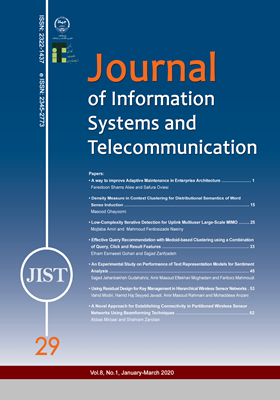-
-
List of Articles
-
Open Access Article
1 - A way to improve Adaptive Maintenance in Enterprise Architecture
feridon Shams safura oviesi -
Open Access Article
2 - Density Measure in Context Clustering for Distributional Semantics of Word Sense Induction
Masood Ghayoomi -
Open Access Article
3 - Low-Complexity Iterative Detection for Uplink Multiuser Large-Scale MIMO
Mojtaba Amiri Mahmoud Ferdosizade Naeiny -
Open Access Article
4 - Effective Query Recommendation with Medoid-based Clustering using a Combination of Query, Click and Result Features
Elham Esmaeeli-Gohari Sajjad Zarifzadeh -
Open Access Article
5 - An Experimental Study on Performance of Text Representation Models for Sentiment Analysis
Sajjad Jahanbakhsh Gudakahriz Amir Masoud Eftekhari Moghaddam Fariborz Mahmoudi -
Open Access Article
6 - Using Residual Design for Key Management in Hierarchical Wireless Sensor Networks
Vahid Modiri Hamid Haj Seyyed Javadi Amir Masoud Rahmani Mohaddese Anzani
-
The rights to this website are owned by the Raimag Press Management System.
Copyright © 2017-2025







